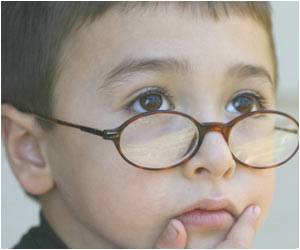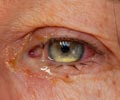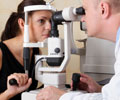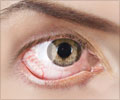Cataract surgery in infants may not reduce the risk of glaucoma and poses a 22 percent risk of developing glaucoma 10 years later.
- Cataract surgery in infants may not reduce the risk of glaucoma andposes a 22% risk of developing glaucoma 10 years later
- Replacing the lens in the infant's eye during surgery may not predict very well the final power of the intraocular lens at a child’s maturity
- This urges the need for regular eye monitoring in glaucoma suspected infants every four to six months, depending upon their condition
Read More..
Glaucoma is a sight-threatening condition that damages the optic nerve-the connection between the eye and brain.
Cataract surgery is used to remove and replace the cloudy lens. It is speculated that surgery interferes with the maturation of how fluid flows out of the infant's eye that leads to increased eye pressure and optic nerve damage, causing glaucoma.
Patients at Risk for Glaucoma
The team involved 114 study participants (ages 1-6 months) born with a cataract in one eye. In the operating room during cataract removal, the infants were randomly assigned to receive an artificial lens implant or go without a lens, a condition called aphakia."I tell patients' parents that implanting a lens in the infant's eye is like buying your child's wedding shoes when they're an infant. It is hard to predict what final power the intraocular lens should have, without knowing how that eye will grow over the years, so placing a lens at the time of cataract removal in an infant involves estimation and may not turn out to be correct. Hence the eye may end up needing strong glasses or even replacement of the original lens implant," says the lead author on the paper, Sharon F. Freedman, M.D., a Pediatric Glaucoma specialist at Duke University, Durham, North Carolina.
Upon re-examination of 110 children at 10 years, 25 eyes (24%) had developed glaucoma, and 21 eyes (20%) were glaucoma suspects due to elevated eye pressure. However, visual acuity was preserved. At 10 years, 40% of the followed children had developed the diagnosis of glaucoma or glaucoma suspect.
Need for Regular Assessment
The evidence of glaucoma-related eye damage – assessed by imaging of the optic nerve head to measure the retinal nerve fiber layer thickness, was not found. This was attributed to the close patient monitoring, as any sign of glaucoma was aggressively treated. The study found that the risk of glaucoma after cataract removal rosefrom 9% at 1 year, to 17% at 5 years, and to 22% at 10 years.Collaboration among the 12 study centers defined diagnostic standards for pediatric glaucoma and glaucoma suspect and criteria for glaucoma-related adverse events, said Freedman.
- Glaucoma-Related Adverse Events at 10 Years in the Infant Aphakia Treatment Study: Sharon F. Freedman et al: JAMA Ophthamology Dec 2020: doi:10.1001/jamaophthalmol.2020.5664
Source-Medindia
















